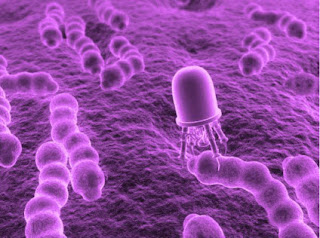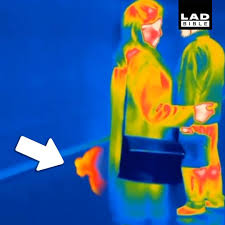A Nano Introduction to Nanorobotics
Nanorobotics, a few small changes everyday adds up
What is Nanorobotics and Nanotechnology? A quick background.
Nanotechnology is a more recent development, conceptualized in late 1959 by Richard Feynman. It involves manipulating individual atoms or molecules, and using it to complete an objective or a product is nanotechnology. Nanorobotics is the use of nanoscopic autonomous machines to achieve these goals, on a scale that humans cannot manufacture and mass produce on our own. They can be used to build the smallest creations known to man, or grouped together to accomplish tasks much larger than themselves, on the microscopic scale.There are many different types of nanorobotics, such as using machines to manipulate individual atoms, 3D printers that operate at the nanoscopic scale, and nanobots small enough to be used on the cellular level. In this blog post I'll be discussing autonomous nanobots that can be deployed into the body that can be used in medical treatments.
Why do we need them?
The term robot by definition is a machine that carries out a set of instructions automatically, nanobots are so small that external forces are required at each phase to carry out new instructions, much like winding up the wheels of a toy car to take it to the next destination. A group of nanobots with their own set of instructions are able to self-perpetuate each other into completing tasks, so long as there isn't an interrupt to the flow of progress.
Dynein
This video, produced by Veritasium, shows how exactly these organic nanomachines work. Dynein carries cargo along microtubules that are essential for cell function, in this case the "on" signal for the microtubules being constructed. They convert ATP into chemical energy, which allows the dynein protein motors to "walk" along the microtubules to their destination. This is a great example of how integrated nanorobotic machines are already integrated in everything around us!Above: Rendered demonstration of organic machines replicating and separating DNA
Nanoswimmers
Researches at ETH Zurich created a nanoswimmer, a nanowire 15 micrometres long and 200 nanometres thick, and can move at 15 micrometres per second. It uses nickel that can be controlled using magnetic fields, to swim through fluid. Currently when receiving medicine, the drugs are delivered throughout the body before it reaches its target destination. If more research is done in this field it could be used to improve delivery of medicine to target areas of the body.
Market and future of nanorobotics
Nanotechnology in 2018 was valued at around 5 billion dollar with projections of reaching 8.3 billion by the year 2023. With more awareness around nanorobotics and its usefulness in surgery and treatment, it's no wonder why there is a surge in investment. However, nanorobotics are difficult to design; nanobots that use electricity are prone to electrical interference from external sources such as electric, magnetic fields and radio waves. There are also logistical issues that come with fluid movement, specifically the random movements that occur with brownian motion due to faster moving particles moving liquids, which may prove difficult to overcome. Potential solutions for these issues may lead nanorobotics to more simplistic intuitive designs that are less like everyone's idea of what a robot is, unfortunately leaving the sci-fi dream of tiny crawling spider-like robots on the shelf for later use, possibly in space exploration...Sources:
https://www.nano.gov/nanotech-101/what/definition
https://www.marketsandmarkets.com/Market-Reports/nanorobotics-market-23476797.html
https://www.youtube.com/watch?v=X_tYrnv_o6A
https://www.kurzweilai.net/magnetically-controlled-nanoswimmer-could-deliver-drugs-via-bloodstream
https://www.scientificamerican.com/article/drug-carrying-ldquo-nanoswimmers-rdquo-could-slither-past-the-brain-rsquo-s-cellular-defenses/





Comments
Post a Comment